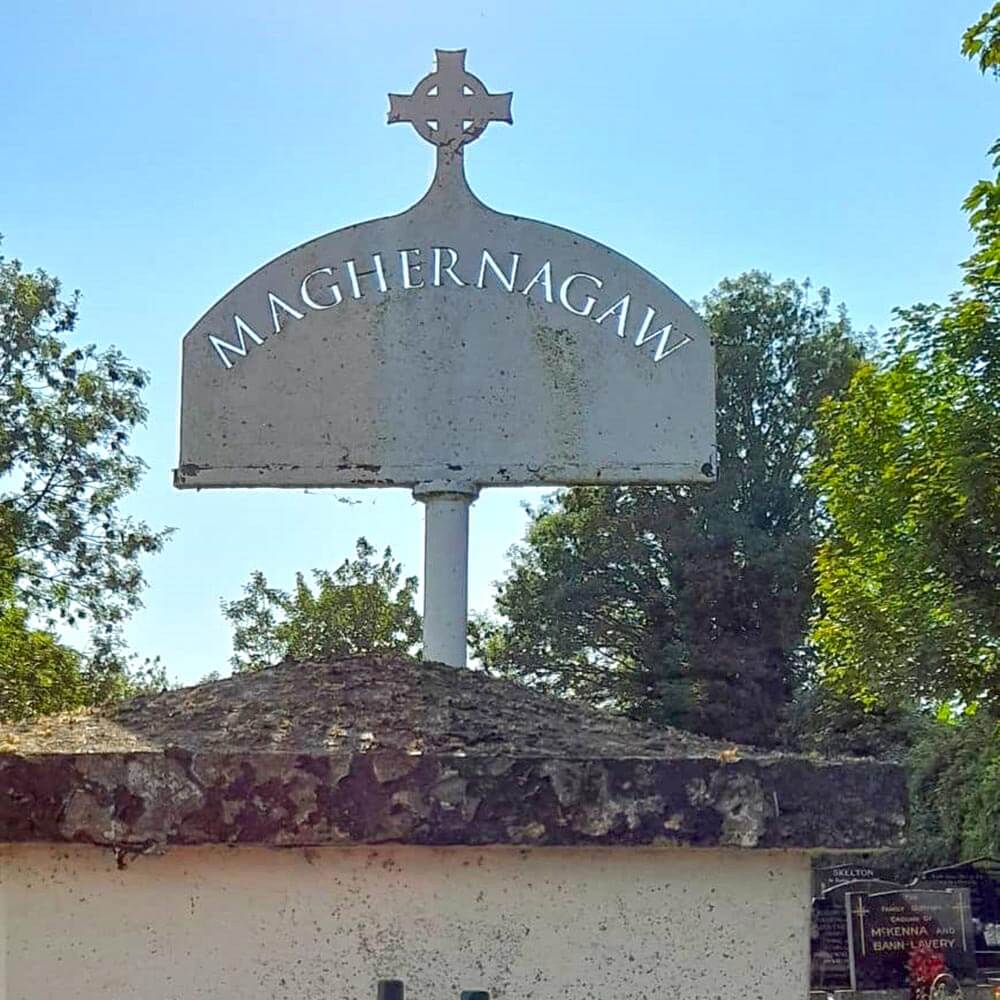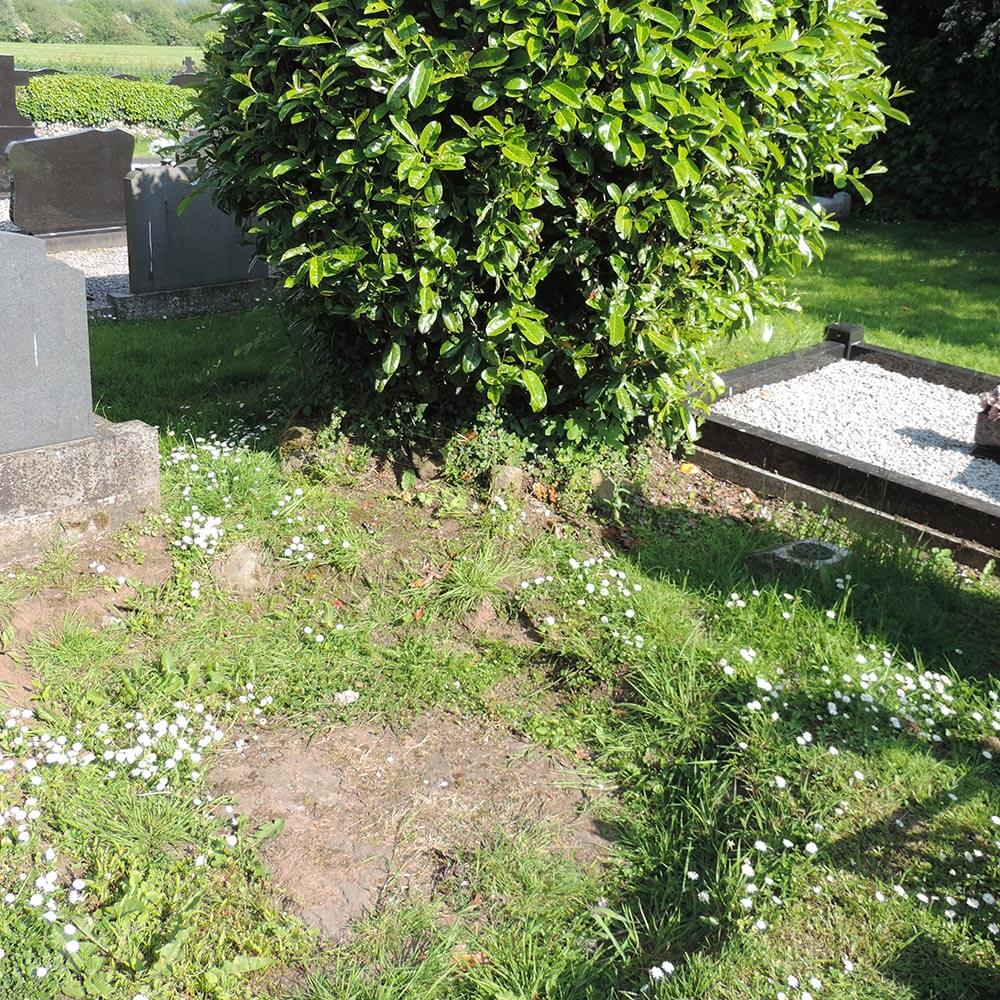(meaning ‘The plain of Gaw’)

The ruins of each of the four ancient churches can still be visited. Each one exhibits some of the recognisable features common to such early Christian sites - a ring enclosure with surrounding stone-wall; an ancient church, often associated with a local saint; a holy well; a holy tree; graves; mud huts or stone cells or other small buildings. In addition, each site has its own distinctive features worthy of note.
The earliest of our four churches was probably that at Maghernagaw – located near the lough, on the Derrymore Road. It was originally known as ‘Tamlaght’, a name of pagan origin which is thought to refer to a 'plague grave'; it may be connected to a great plague (possibly smallpox) which swept the area around 550AD.
The name Maghernagaw suggests a connection with St. Gaw or St. Gobbanus (who also gives name to Seagoe Parish); but, as there are several Irish saints of similar name, identification is difficult.
Maghernagaw was probably established as an early monastic site on the shore of Lough Neagh (the lough previously extended further inland, long before the water level was lowered in C19th). The lough supplied fish for food, and the nearby woods of Killultagh provided an abundance of building materials. The large field opposite Maghernagaw graveyard may once have been used by monks to grow grain. The first inhabitants may also have found it easier to access the area by boat from the lough, rather than over land through the dense woodland of Killultagh.
Maghernagaw is thought to have been the original parish church of Aghagallon; with Aghagallon Old Church being built later as a chapel of ease.
The old burial ground is thought to have been much larger than it is at present since a large quantity of human bones were found well beyond the current boundary – and then re-buried.
Near the centre of the graveyard lies a large flat stone which is believed to cover the grave of the sites founder – possibly a St Colman (or Culin). This stone may also have been a place of prayer and penance for later holy men such as St. Gaw (or Mogawoge or Cahoo). Local folk-lore maintains that St Patrick prayed at the site, leaving the imprints of his hands and knees on the stone.





An ancient bell was once kept close to the Saint’s Bed, or hidden in the undergrowth nearby, and tolled for funerals. However, it disappeared in the late 18th. century.
Two stones once lay on the Saint’s Bed, which were said to be marked with the finger-prints of holy men, who beat their breasts with the stones as a form of penance.
Legend has it, that if one of those holy stones was ever removed from the Saint’s Bed, it would soon miraculously return to its proper place.
Francis McCorry recounts two stories. The first tells of one Rawden Studdert who threw one of the stones into the nearby Lough Money - only to discover, the next day, that it had returned to its original location. The second is a more cautionary tale about one Thomas Elliott who carried one of the stones to his home in Moira; an act which soon led to the calamitous death of his entire family.
At the time of writing, the holy stones are not on the Saint’s Bed – only time will tell whether they ever return.
Holy wells were once an integral part of the early Christian landscape – and earlier still may have been the focus of pre-Christian worship. All four of our ancient churches had holy wells associated with them; but at Maghernagaw the devotion of seeking healing from the holy water endured into recent memory.
A Holy Tree also once stood in the graveyard, to which was attributed healing powers. People would hang ribbons or push coins into the tree’s bark, seeking cures for warts and other ailments.
Sadly, the well has become over-grown and the tree died in the 1980’s – possibly as a result of the large number of coins pushed into its bark. However, people seeking cures have continued to place the traditional coins in a Holy Stoup (stone bowl) which is cemented to the church wall, or on the Saint’s Bed.
